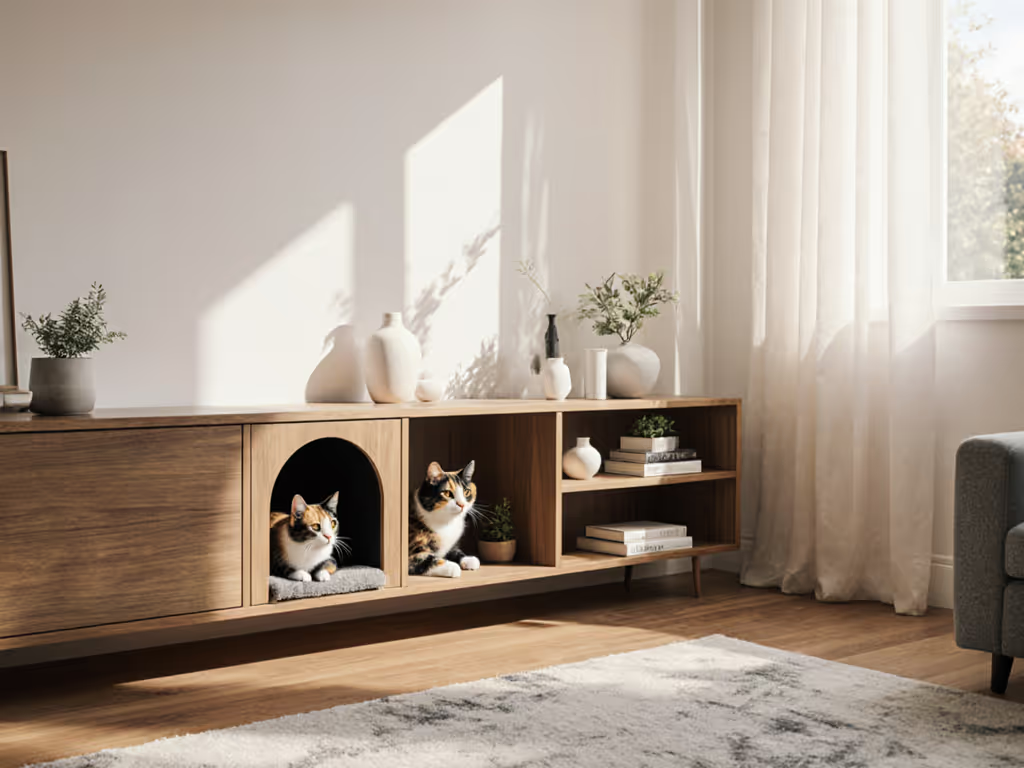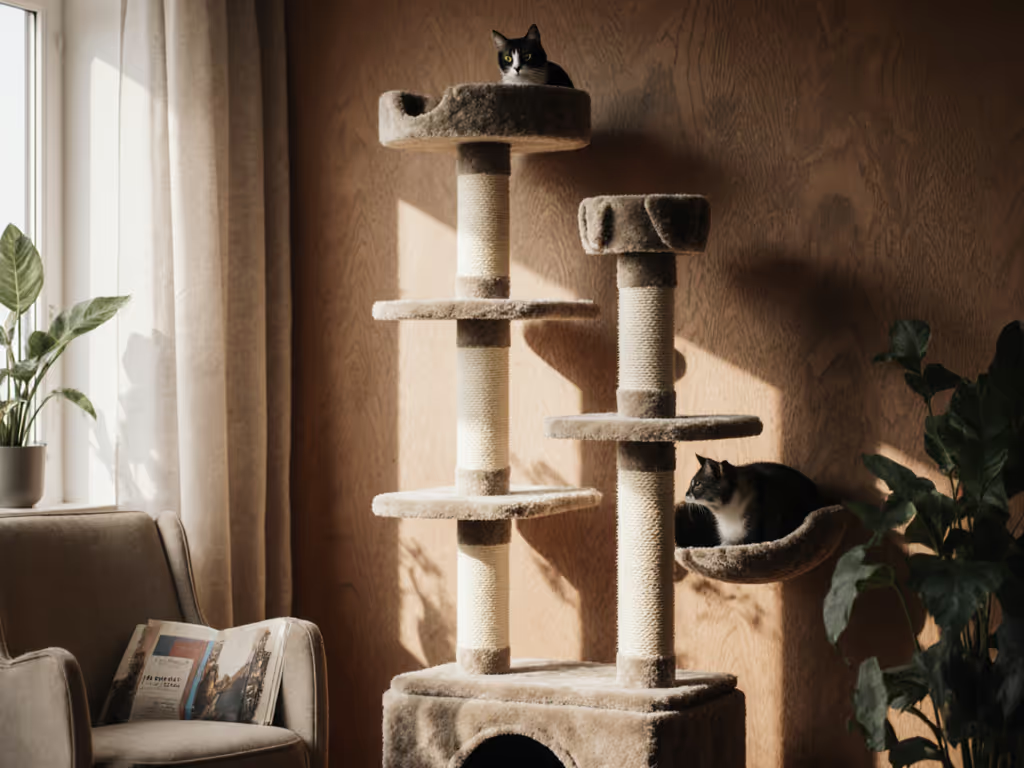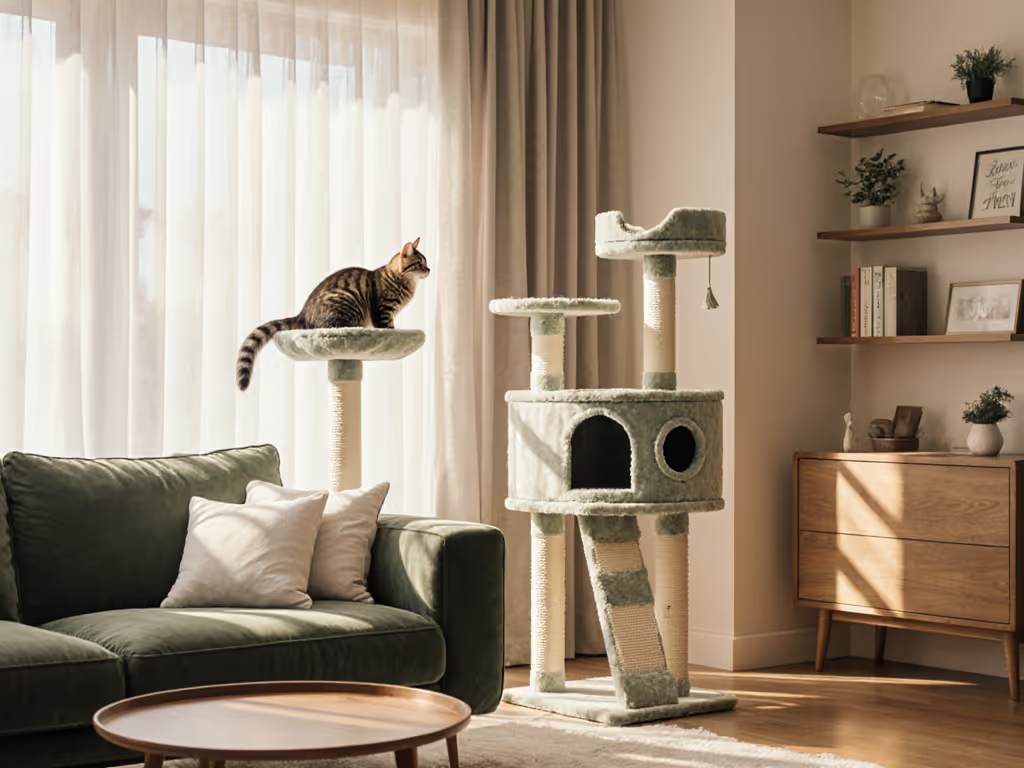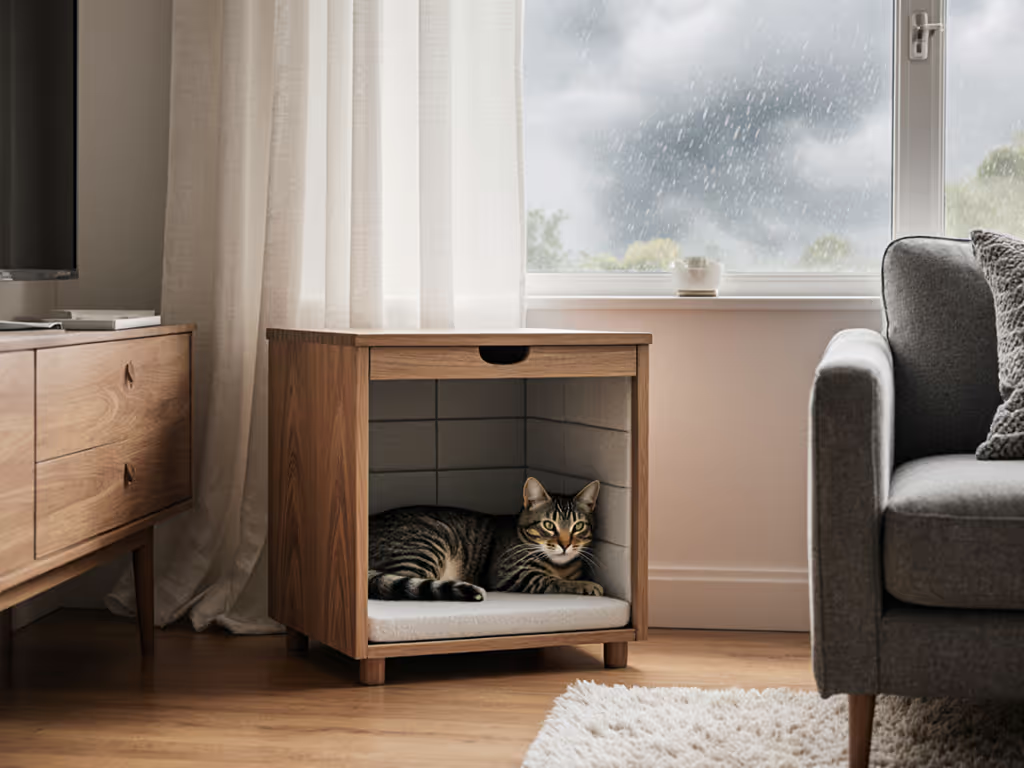
Small Cat Furniture for Senior Cats: Arthritis Comfort Solutions
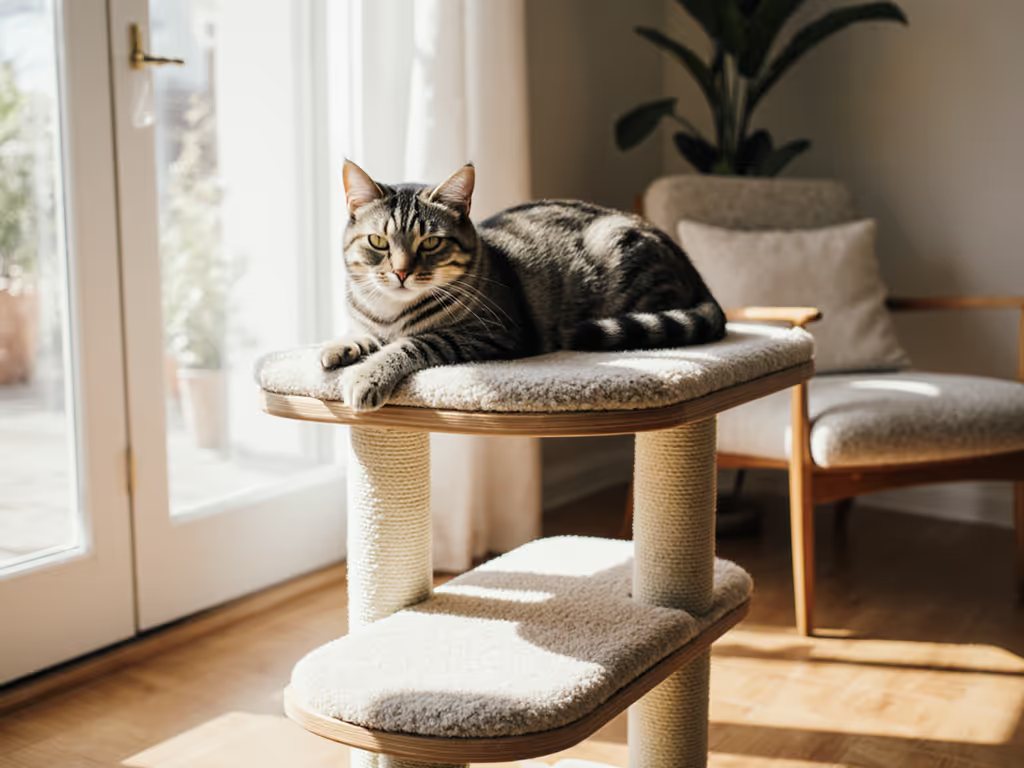
When space is limited but your senior cat's comfort is paramount, the right small cat furniture becomes more than convenience, it transforms cramped quarters into a thriving feline habitat. As cats age past 10 years (when most enter their senior years), over 90% develop some form of arthritis. This joint pain changes how they navigate even the coziest spaces. I once worked with a shelter cat named Miso who refused to leave his carrier, until we created a vertical pathway using staggered shelves and gentle ramps. His transformation wasn't magic; it was about meeting his instinctual need for territory that spoke his language. Behavior blossoms when spaces speak your cat's native language, and for seniors especially, their environment must prioritize choice, vantage points, and accessible retreats. Let's explore how to translate these principles into practical solutions for your aging companion.
Meet the need, not the symptom.
Why do senior cats need specially designed small cat furniture?
Senior cats don't just sleep more, they need smarter spaces. With up to 18 hours daily spent resting, their sleeping surfaces directly impact joint health. Regular cat furniture often fails senior cats because:
- Height becomes hazard: Standard cat trees with 12-18 inch jumps force painful leaps
- Unstable bases create anxiety, making cats avoid otherwise appealing spots
- Lack of strategic placement leaves them stranded between essential resources
The key isn't eliminating vertical space, it's reimagining it. Arthritic cats still seek elevated views but need gentler access. A minimal cat tree with staggered platforms at 6-8 inch intervals accommodates their reduced mobility while honoring their instinct to observe from above. This approach aligns with the core truth I've seen repeated in shelters and homes: cats thrive when they can choose between ground-level safety and vertical surveillance without compromising joint comfort.
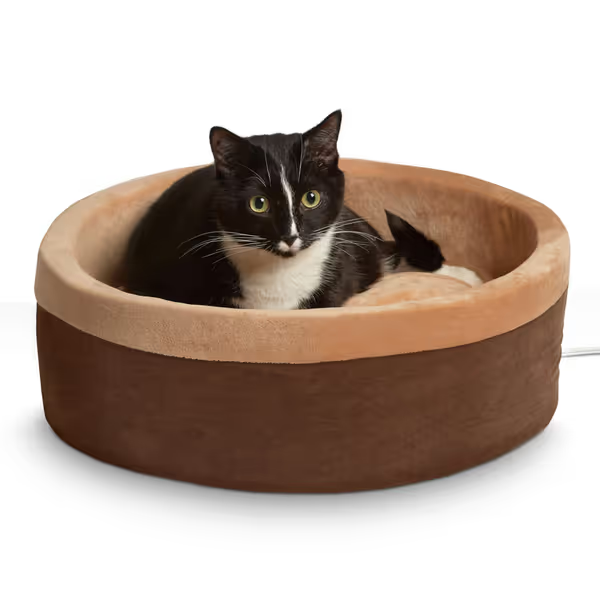
K&H Thermo-Kitty Heated Bed
How can small cat furniture accommodate arthritis while fitting in limited spaces?
Urban dwellers often face the "space vs. comfort" dilemma. The solution lies in precision engineering that serves both human aesthetics and feline needs:
- Wall-mounted routes: Install floating shelves in stair-step patterns along existing walls
- Dual-purpose furniture: Choose pieces that integrate with your decor (like a side-table cat perch)
- Modular systems: Opt for components that can be rearranged as mobility changes
When I helped a client in a 600-square-foot apartment accommodate her 14-year-old cat with arthritis, we created a "vertical highway" using three staggered shelves leading to a window seat. The magic wasn't in the height, it was in the predictable 7-inch increments between levels. This arthritis cat furniture solution took less floor space than a single armchair, yet gave her cat three distinct vantage points. Remember: seniors need consistent routes. Moving furniture frequently creates navigational anxiety that exacerbates joint stiffness.
What features should I prioritize in senior cat furniture?
Not all compact solutions serve arthritic cats equally. Look for these practical features that address both physical limitations and behavioral needs:
- Non-slip surfaces (carpeted or textured finishes prevent painful slips)
- Gentle inclines (15-20 degree ramps instead of vertical ladders)
- Dual entry/exit points (so cats aren't trapped in high spots)
- Washable components (senior cats often have reduced grooming ability)
One often-overlooked element is "landing zones": small flat areas between climbing sections where cats can rest their joints. This sensory-focused design prevents the "commitment jumps" that cause older cats to abandon furniture entirely. The best arrangements create predictable pathways where your cat knows exactly where each paw will land, a concept that reduces anxiety while protecting fragile joints.
Can heated elements genuinely help senior cats with arthritis?
Cold exacerbates joint stiffness, making heated cat bed options valuable additions, but only when implemented thoughtfully. Unlike humans, cats don't need constant high heat; they seek warmth in short bursts. Optimal solutions:
- Thermostatically controlled beds that activate only when occupied
- Locally heated platforms integrated into existing furniture (not standalone units)
- Strategic placement near natural heat sources (like south-facing windows)
I've seen remarkable improvements when a heated pad is placed beneath a favored resting spot, not as a replacement for proper furniture, but as complementary support. The key is making warmth an optional element within their territory, preserving their ability to choose cooler zones when needed. This approach embodies the habit-aware principle that comfort solutions should expand choices rather than create dependencies.
How do I transition my senior cat to new furniture without causing stress?
Even beneficial changes can overwhelm arthritic cats. For a comprehensive walkthrough of introducing cats to new furniture, read our stress-free acclimation guide. Follow this precise 3-step transition process:
- Seed the space: Place familiar-scented items (like worn clothing) on new platforms for 3 days
- Create stepping stones: Position food/treats on progressively higher levels over 5-7 days
- Reinforce naturally: Gently block less accessible spots while leaving new routes open
This method mirrors how I helped Miso transition from his carrier; he started claiming the second shelf after we placed his food there. The difference between success and frustration often lies in respecting your cat's timeline. Rushing forces "accommodation" rather than true acceptance.
What common mistakes should I avoid when selecting furniture for senior cats?
Many well-intentioned owners inadvertently create barriers through these mistakes:
- Prioritizing aesthetics over accessibility (decorative ladders with wide rung spacing)
- Installing furniture against walls (eliminating escape routes)
- Using unstable "minimal" designs that wobble when jumped on
- Overlooking floor-level options (many seniors prefer ground-level caves)
The most critical error I see: treating furniture as decoration rather than functional territory. Your cat doesn't care if it matches your sofa, they need to know exactly where each paw will land. Anchor all pieces securely, maintain consistent layouts, and always provide multiple pathway options. Remember: senior cat comfort isn't about special treatment, it's about intelligent design that honors their instincts while accommodating their physical reality.
Final Thoughts: Building a Truly Supportive Environment
Creating the ideal space for your aging cat isn't about buying specialized products, it's about thoughtful territory design. The most effective solutions emerge when we step into our cats' sensory world and ask: "Does this space offer predictable pathways, joint-friendly transitions, and meaningful choices?"
As your cat's mobility changes, revisit their environment with fresh eyes. Notice where they've created "accidental" pathways (like jumping between furniture pieces), these reveal their natural preferences. Your goal isn't to build a cat playground, but to craft a precise habitat that supports their evolving needs without compromising your living space.
Ready to explore further? Observe your cat's current movement patterns for three days: note hesitation points, preferred resting heights, and avoided areas. This simple exercise provides more insight than any product recommendation. When you understand their natural pathways, you'll discover that the most elegant solutions often require minimal furniture and maximum awareness.
Meet the need, not the symptom.

